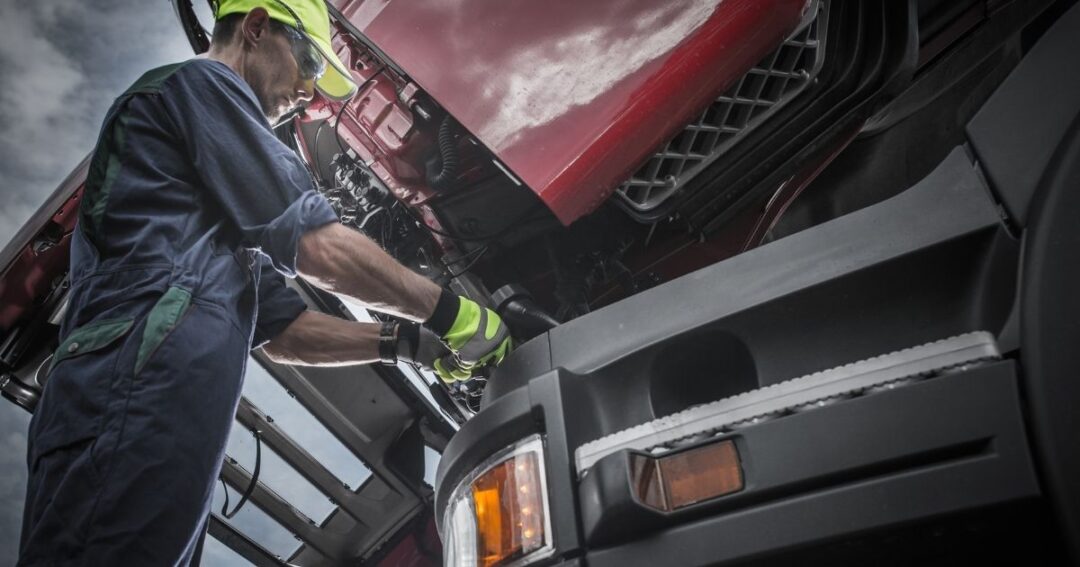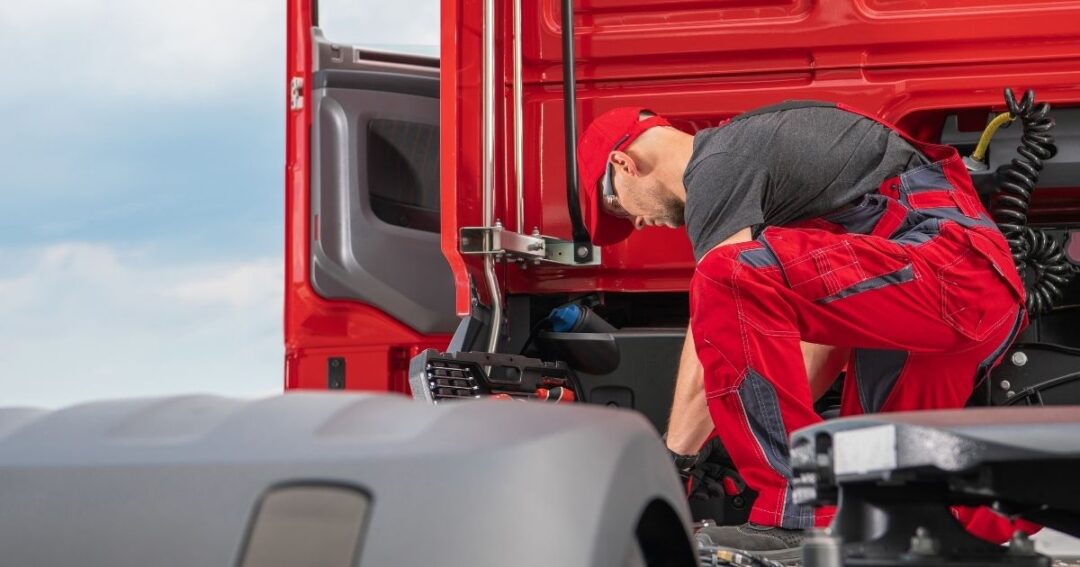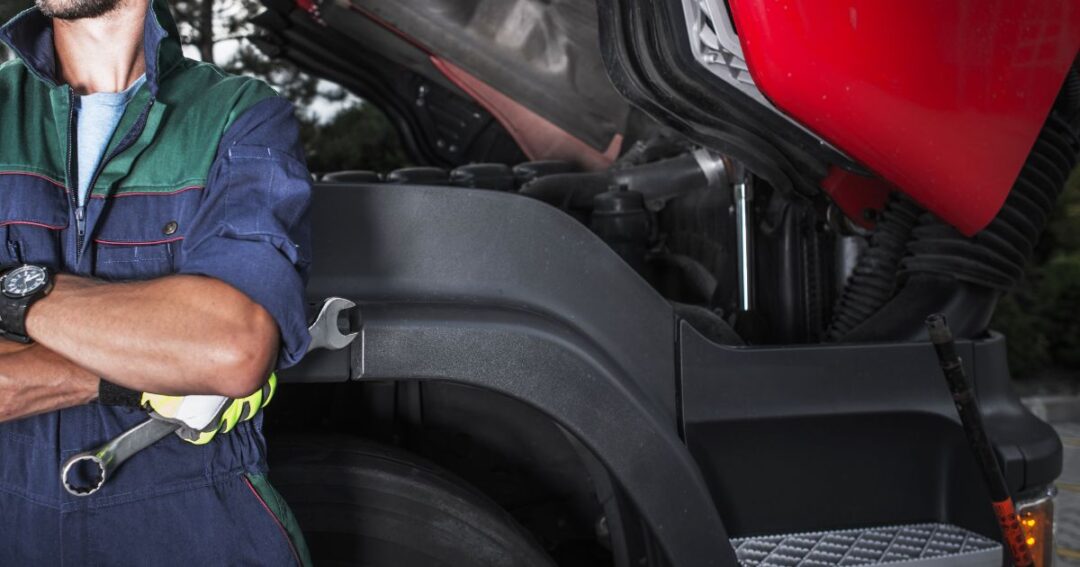Maximize Uptime: Pro Tips for Maintenance and Care
Flatbed trucking throws unique challenges at your rig, from hauling heavy, oversized loads to battling the elements across long hauls. Truck maintenance isn’t just about avoiding breakdowns—it’s about maximizing your time on the road and ensuring every load arrives safely and on schedule.
At Chief Carriers, we understand the unique demands of flatbed trucking and the importance of keeping your truck running smoothly. We’ll cover essential semi-truck maintenance tips, including preventive care and repair strategies, to maximize your vehicle’s efficiency, extend longevity, and minimize downtime.

The Importance of Regular Truck Maintenance
Why is routine truck maintenance crucial for flatbeds? Because things can—and will—break on your trucks. These workhorses endure immense stress, carrying heavy, often irregular loads across vast distances; it’s a given that they’ll require ongoing maintenance.
A proactive preventive maintenance schedule, including detailed logs, regular inspections, and seasonal planning, is essential for minimizing unexpected breakdowns and keeping your flatbed on the road. Diagnostics and consistent tracking keep your truck operating reliably, maximizing uptime and efficiency.
Preventive maintenance is a wise investment, not just an expense. Addressing minor issues early prevents costly repairs, extends your truck’s lifespan, and ensures peak performance, safeguarding both your investment and your drivers.
The Risks of Neglecting Truck Maintenance
Maintenance is more than an issue affecting individual trucks. Truck maintenance is central to any trucking company because it impacts everything from the bottom line to driver satisfaction.
Some of the risks for a trucking business that neglects truck maintenance include:
- Increased Downtime and Delays: Breakdowns become more frequent, leading to missed delivery deadlines and dissatisfied customers.
- Higher Repair Costs: When ignored, minor, easily fixable issues can escalate into major, expensive repairs.
- Safety Risks: Poorly maintained trucks pose a significant safety hazard to drivers and other road users, increasing the likelihood of accidents.
- Decreased Fuel Efficiency: Neglected maintenance can lead to increased fuel consumption, cutting into profit margins.
- Driver Turnover: Drivers are less likely to stay with a company that doesn’t prioritize equipment maintenance and safety.
- Damage to Reputation: A reputation for unreliable service and unsafe practices can damage a company’s standing in the industry.
- Increased Insurance Premiums: Insurance companies often view poorly maintained fleets as higher risks, leading to increased premiums.
- Compliance Issues: Not keeping up with maintenance can lead to violations of regulations and costly fines.
A trucking company that doesn’t prioritize keeping its fleet in good running condition is unlikely to succeed in the competitive freight industry.

Essential Pre-Trip Flatbed Maintenance Checks
In order to address problems early, you have to catch them early. This is why conducting a pre-trip inspection before each trip is crucial. The checklist for the inspection should include:
- Tire maintenance: Regularly check tire pressure, inspect for wear, and ensure proper alignment.
- Brake system inspection: Inspect pads, rotors, and air lines for optimal braking performance.
- Fluid checks: Monitor oil, coolant, transmission, and power steering fluid levels.
- Lighting and electrical system: Verify all lights and connections are functioning correctly.
- Securing systems: Inspect straps, chains, binders, and the overall flatbed structure for damage.
More in-depth versions of these inspections should be conducted monthly or according to the manufacturer’s recommendations.
Types of Truck Maintenance Services
Maintaining a flatbed semi-truck involves routine services across the truck’s different systems. The services are similar to those that personal vehicles receive, but semi-truck maintenance is significantly more complex and demanding due to the sheer size, weight, and operational demands placed on these heavy-duty machines.
We’ll examine each system and what it needs for optimal performance and safety.

Engine and Drivetrain Maintenance
The engine and drivetrain are the heart of your semi-truck, and keeping them in top condition is crucial for the reliability and longevity of your flatbed. The two most common problems that occur with semi-truck engines and drivetrains are engine overheating and transmission problems.
Fortunately, these are relatively easy to avoid with regular maintenance to ensure smooth and efficient operation. Here’s a rundown of standard maintenance services we recommend:
- Oil and Filter Changes
- Air Filter Replacement
- Fuel Filter Replacement
- Coolant System Flush and Fill
- Transmission Fluid and Filter Changes
- Differential Fluid Changes
- Drive Shaft and U-Joint Lubrication
- Clutch Adjustment and Inspection
- Engine Diagnostics
- Turbocharger Inspection and Maintenance
- Exhaust System Inspection
- Belt and Hose Inspections
- Engine Mount Inspection
Brake and Tire Maintenance: Critical for Flatbed Safety
The sheer weight of the cargo places immense stress on flatbed truck brakes and tires, and keeping them in excellent working condition is critical for safety and efficiency. Brake system failures or tire blowouts can cause catastrophic – even fatal – results for semi-truck drivers and other motorists.
To make sure your truck is safe, we recommend the following list of standard maintenance services for brake systems and tires:
- Brake Pad and Shoe Inspection/Replacement
- Brake Rotor and Drum Inspection/Resurfacing/Replacement
- Brake Caliper and Wheel Cylinder Inspection/Repair/Replacement
- Air Brake System Inspection
- Anti-lock Braking System (ABS) Diagnostics
- Brake Adjustment
- Tire Pressure Checks
- Tire Tread Depth Inspection
- Tire Alignment
- Tire Balancing
- Tire Rotation
- Wheel and Rim Inspection
- Valve Stem Inspection and Replacement

Electrical System Maintenance
Electrical system malfunctions in semi-trucks can cause a host of problems due to the increasing role technology plays in modern trucks. Electrical issues can range from mildly irritating (a bulb not working) to being stuck on the side of the road (an engine sensor or starter motor malfunction).
To avoid electrical system problems, here’s a list of recommended maintenance services to keep everything connected and working in your truck:
- Battery Inspection and Maintenance: Check voltage, clean terminals, and test battery.
- Alternator Inspection: Verify proper charging output and inspect components.
- Wiring and Connection Checks: Inspect wiring harness and connections.
- Lighting System Maintenance: Check lights and replace bulbs.
- Sensor and Control Module Diagnostics: Monitor sensors and modules and address fault codes.
- Starter Motor Inspection: Check electrical connections and inspect for wear or damage.
- Ground Connection Inspections: Inspect ground connections and check for corrosion.
- Fuse and Relay Inspections: Check fuses and relays and replace blown or faulty ones.
Flatbed Structure Maintenance
Due to heavy loads, impacts, weather, and general wear, a flatbed truck’s structure eventually experiences frame cracks, decking rot, weakened tie-downs, bent side rails, and weld failures. Minor damage can quickly escalate to dangerous structural failure, so regular inspections and preventative maintenance are key for safe and efficient operations.
Here’s a list of standard structural system maintenance services for your flatbed truck:
- Frame Inspections: Check for cracks, bends, and corrosion, and inspect weld points.
- Decking Inspections and Repairs: Inspect for rot, warping, and damage, replace damaged boards, and apply protective coatings.
- Tie-Down and Securement Point Inspections: Check for damage and corrosion, and ensure proper functionality.
- Side Rail and Stake Pocket Inspections: Check for bends, cracks, and corrosion, and repair/replace damaged components.
- Weld Inspections and Repairs: Inspect welds for cracks and weaknesses, and perform necessary repairs.
- Suspension System Inspections: Inspect for worn bushings, springs, and air ride components, and ensure proper function of all components.
- Subframe Inspection: Check for cracks, bends, and corrosion.
- Crossmember inspections: Check for cracks, bends, and corrosion.

A Final Word on Truck Care
Comprehensive truck care goes beyond just mechanical upkeep. Proper storage and protection from the elements are equally important for preserving your truck’s condition.
- Covered storage or a well-ventilated garage is best to protect your truck’s paint and interior components from sun damage, or corrosion on exposed metal surfaces and electrical connections from harsh winters.
- If covered storage isn’t feasible, regularly wash and wax the exterior to provide a protective barrier.
- Inspect and maintain seals around windows and doors to prevent water damage.
- For extended periods of inactivity, disconnect the battery to prevent drainage, and use tire covers to minimize UV damage.
Maintaining a clean and protected exterior and interior not only projects a company’s professional image but also boosts driver morale and overall efficiency.
Treat Your Flatbed Truck With the Care It Deserves
Preventive maintenance is the cornerstone of reliable flatbed operations. By prioritizing truck maintenance and addressing potential issues early, you’ll safeguard your truck’s longevity, maximize efficiency, and minimize costly downtime, keeping your flatbed truck rolling strong mile after mile.
At Chief Carriers, we prioritize fleet maintenance to ensure driver safety and the reliable, on-time delivery of valuable freight. Our commitment to excellence has earned us recognition as one of the top companies to drive for and certification as a TCA Elite Fleet. If you’re a truck driver looking for driving opportunities, contact us and see why we’re the leader in flatbed trucking.
For more insights on flatbed truck maintenance from our General Manager, Andrew Winkler, listen to the Driven Too Far podcast episode, “Pride in Your Ride: Maintaining Your Semi Truck.”

